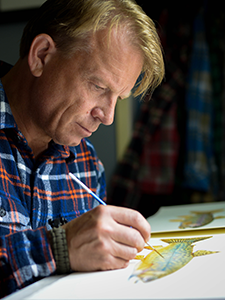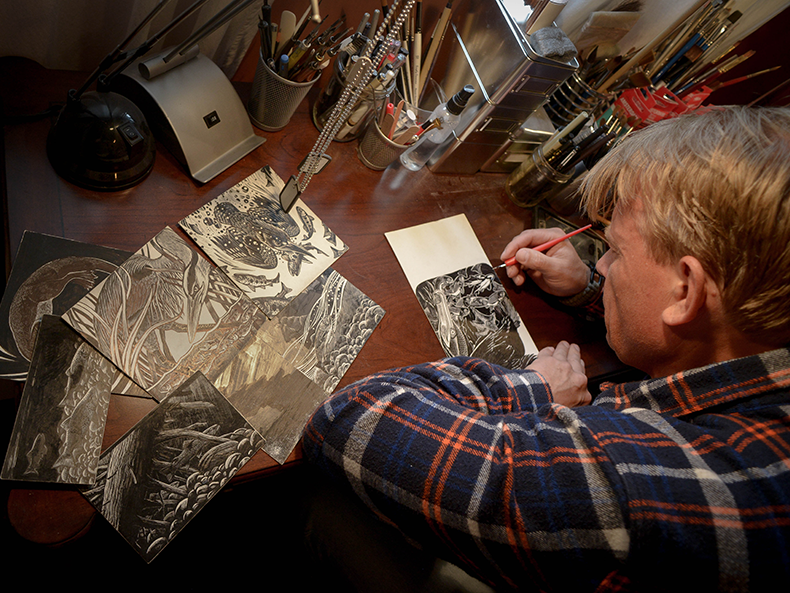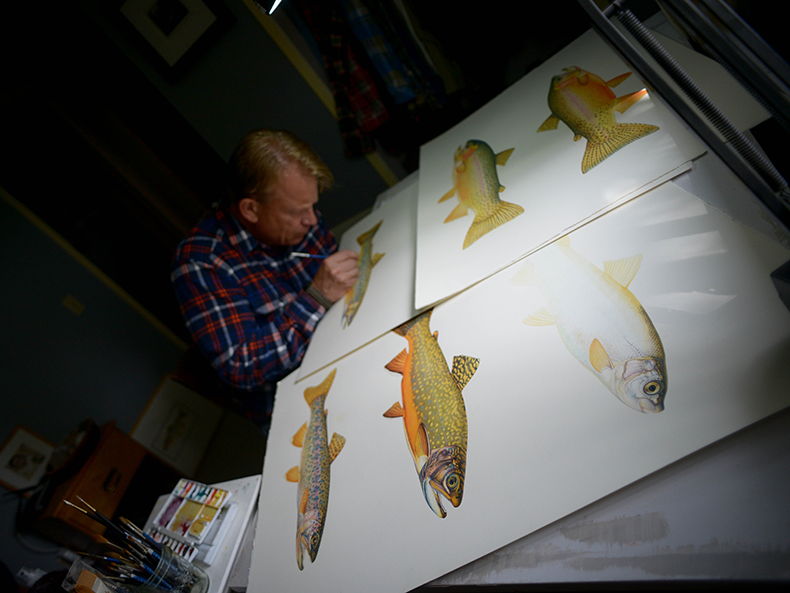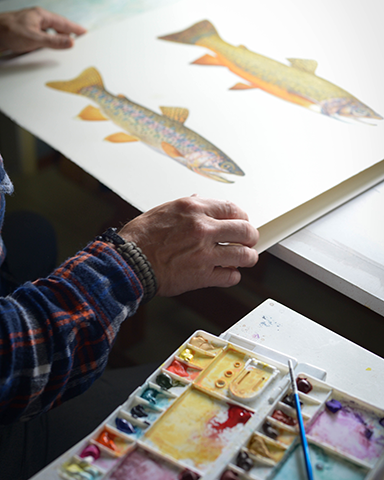AUArts: What do you do at AUArts?
Karl Geist: I've been an instructor at AUArts for about 21 years. I started as a sessional instructor, and then about eight years ago became a permanent faculty member. I teach in the School of Communication Design, primarily Drawing, Illustration and Information Illustration. So it's been taught from first to fourth year, and I’ve enjoyed the experience. It’s by and large, a wonderful place to work.
AUArts: Did you graduate from AUArts?
Geist: I did, when I was a student it was still called the Alberta College of Art.
After, I went to the University of Victoria for a few years, and took an honours in Visual Arts there. In the meantime, I maintained an illustrative and fine arts practice.
AUArts: I was looking at your Instagram, I notice you do a lot of illustration based on nature and wildlife.
Geist: I had an influential father that was a very well-known wildlife biologist. And so working with him, I became interested in disseminating images that came from both a scientific as well as naturalistic source. I still continue that practice today, and sort of based my work around exploration and interface with wild areas and fish and wildlife.
AUArts: That's really interesting. And did he support you going into the arts?
Geist: My parents were very supportive of taking a slightly different route than the very academic approach that my father engaged with. I always saw that work be sort of reflective of both, in that pure research often needs to be supported by a visual dissemination to make it approachable to a broader audience.
AUArts: What do you think sets students from AUArts apart from other art schools in Canada?
Geist: I think one of the biggest things (speaking from the Design side of things) is that we give our students the capacity to solve visual communication problems. Through the design process, they become problems solvers. They become flexible and nimble in terms of their capacity to adjust to a methodology to problem solving.
Our students have a very rigorous, disciplined approach to problem solving. And that means that they problem solve not only just the visual, but they also have the problem solving of dealing with clients and different individuals. Those are some of the soft skills that come out of the design process.
AUArts: How do you see the students growing from first year to fourth year?
Geist: What I think is the students, having that exposure to the design process and solving visual communication problems, start to see how the fundamental skills of drawing and design can be applied to communication problems.
Once they've established a solid foundational understanding of that, they become much more sophisticated in utilizing that in terms of developing their own voice and style.
AUArts: What is your favourite part about teaching at AUArts?
Geist: I think it's the direct interface. Because we're a small college, oftentimes students will get more than one touchpoint with an instructor. Because of the size of our institution, relationships develop. So as you navigate from first to fourth year, the change of the relationship from instructor to student becomes more and more like colleagues towards fourth year. You’re working to solve problems where you have that supportive interface.
AUArts: And that probably helps to build the AUArts community, having so much face time with instructors on a regular basis.
Geist: Absolutely. Once you've gone through the program at the institution, you become part of this community, and those touch points that you've developed through networking with your peers, foster lifelong relationships that network to other possibilities. You can see how groups of individuals have networked together to become bigger than themselves.
AUArts: What advice do you have for new students coming to art school?
Geist: Be curious and be interested, and don't be afraid of failure, because out of failure comes success. Those moments that are some of the hardest, and most challenging, you often learn the most. Look at the world around you and see the potential of what you're learning and see how it can be applied.




